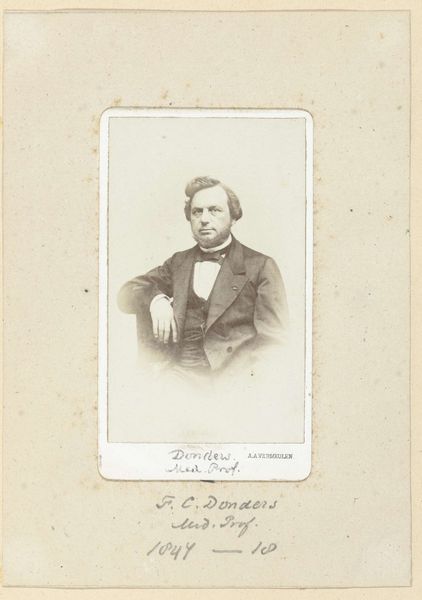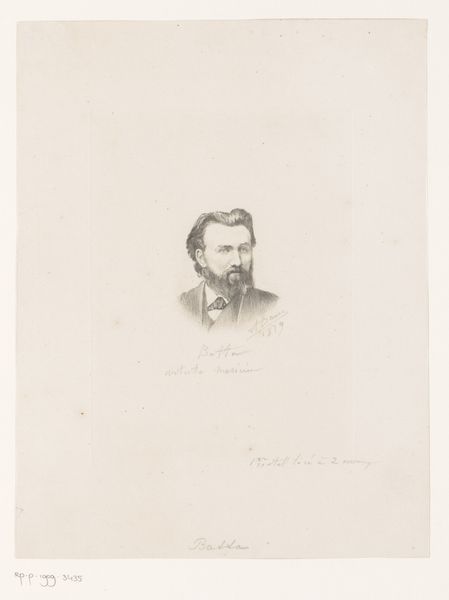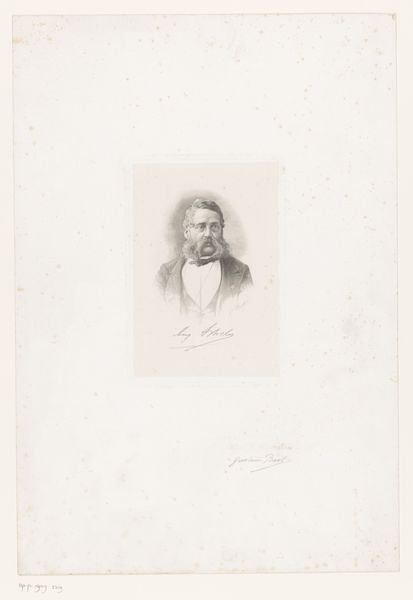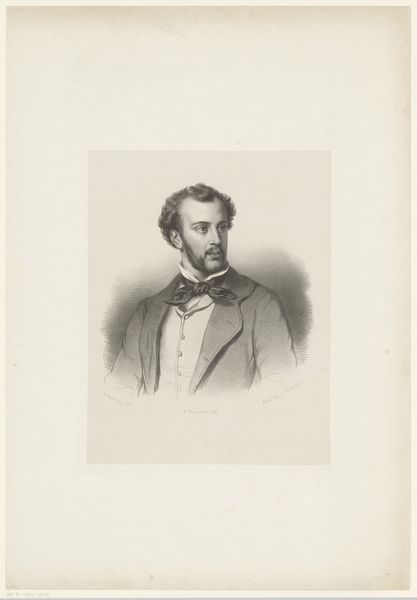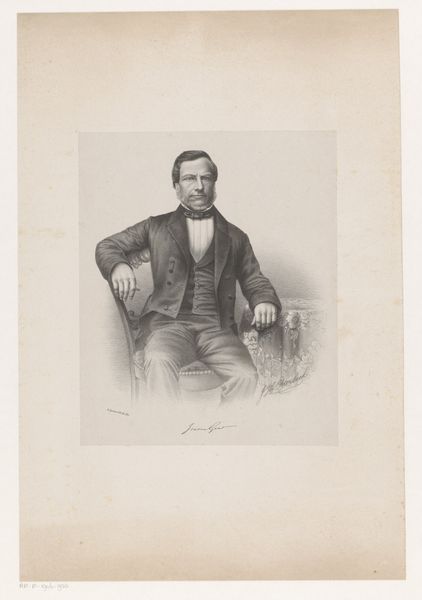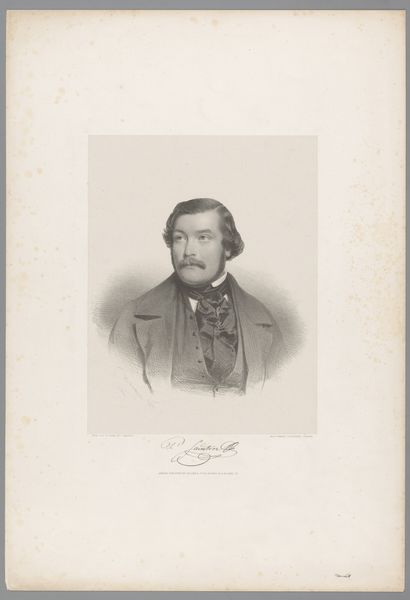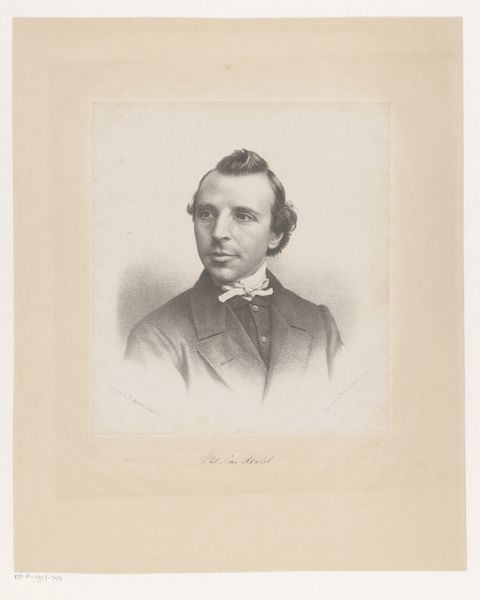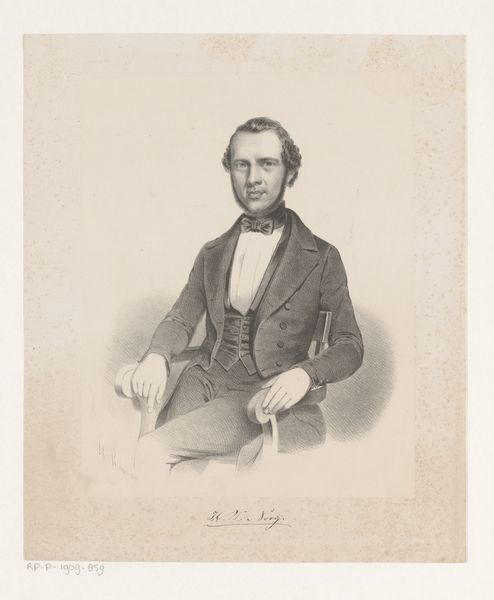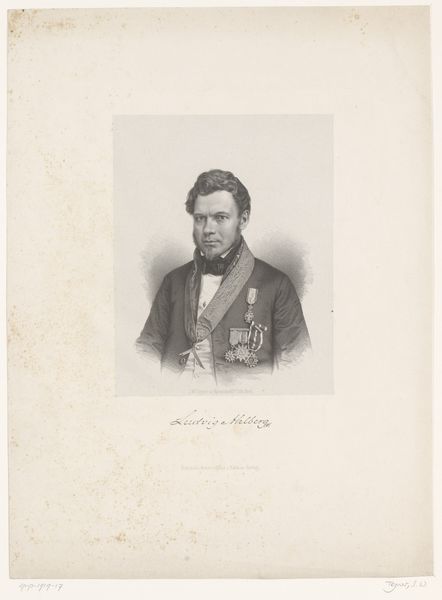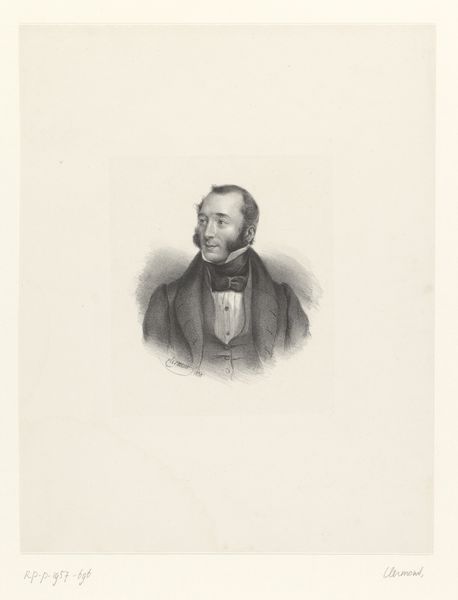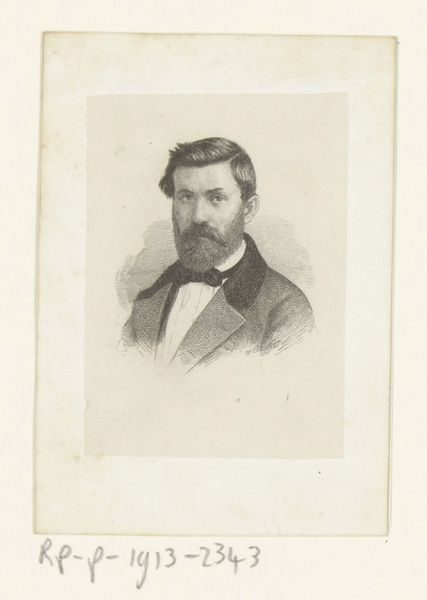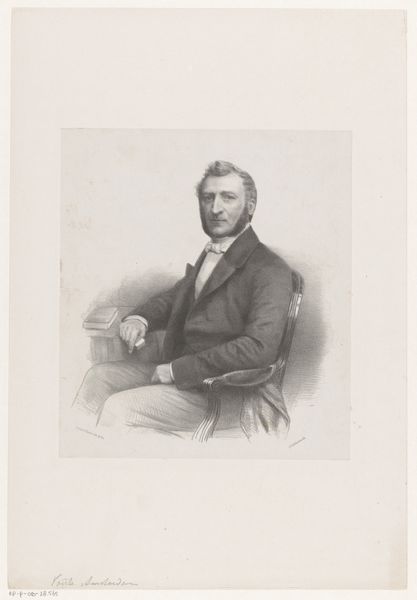
drawing, print, graphite
#
portrait
#
drawing
# print
#
graphite
#
academic-art
Dimensions: height 508 mm, width 378 mm
Copyright: Rijks Museum: Open Domain
Curator: This is a print of a graphite drawing. The piece, titled "Portret van Abraham Kuenen," dates roughly from 1843 to 1863, and the artist is Johan Hendrik Hoffmeister. Editor: The portrait gives off a stern vibe, even austere. I'm struck by the subject's penetrating gaze and the somber tones used throughout. It speaks of a person of significance, burdened perhaps by weighty thoughts. Curator: I agree. And when considering the method of production – a print based on a graphite drawing – it reveals an interesting tension between accessibility and high art. Prints allowed for wider circulation of images, democratizing access to portraiture that was formerly available only to the elite. How does that affect our perception of the sitter? Editor: It’s fascinating to consider the print as a deliberate echo of an ideal. Here, the symbols of mid-19th century intellectual authority are potent – look at his high collar, his neatly tailored suit. This image clearly intends to communicate respectability, anchoring Kuenen in a recognizable context of power and erudition. Curator: I’m interested in the process, in the labour. Graphite lends itself to fine detail. Here we see that in the rendering of Kuenen’s hair and the subtle textures of his clothing. Consider, also, the materiality of the print itself; what type of paper was used and what statement did it make? Editor: Beyond the tangible, consider what the print aims to transmit. Abraham Kuenen's presence has been translated into an object designed to hold specific associations. Think about what's absent: his profession, the nuances of his character, distilled to fit a pre-set format for a public that understands and values learnedness. Curator: Indeed. This work acts as both a commodity produced for consumption and a lasting record that informs us today about class and labour from the mid-19th century. It invites us to question how we produce and disseminate images of those we consider to be historically significant. Editor: So, from this exploration of image and matter, we gain a greater sense of how portraiture carries cultural meaning, from the careful manipulation of appearance to the deliberate appeal to long-held cultural values.
Comments
No comments
Be the first to comment and join the conversation on the ultimate creative platform.
